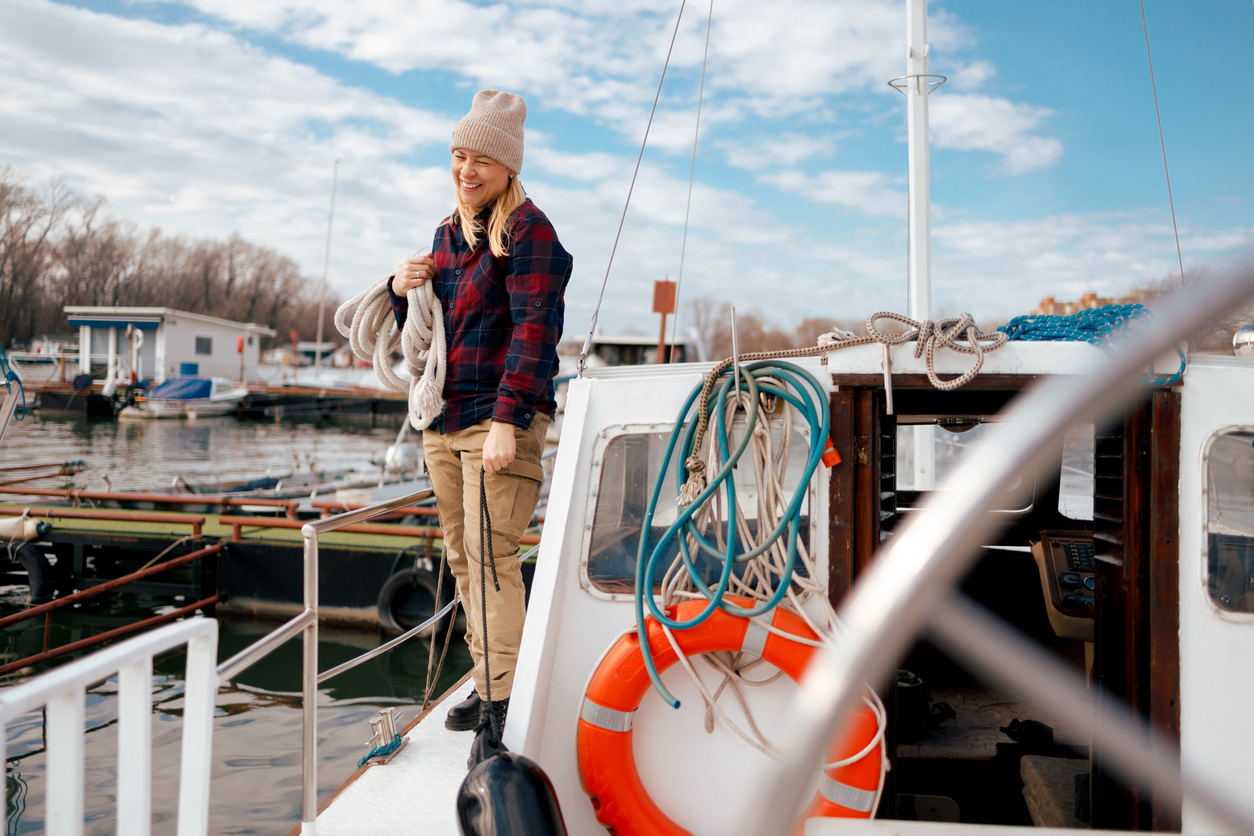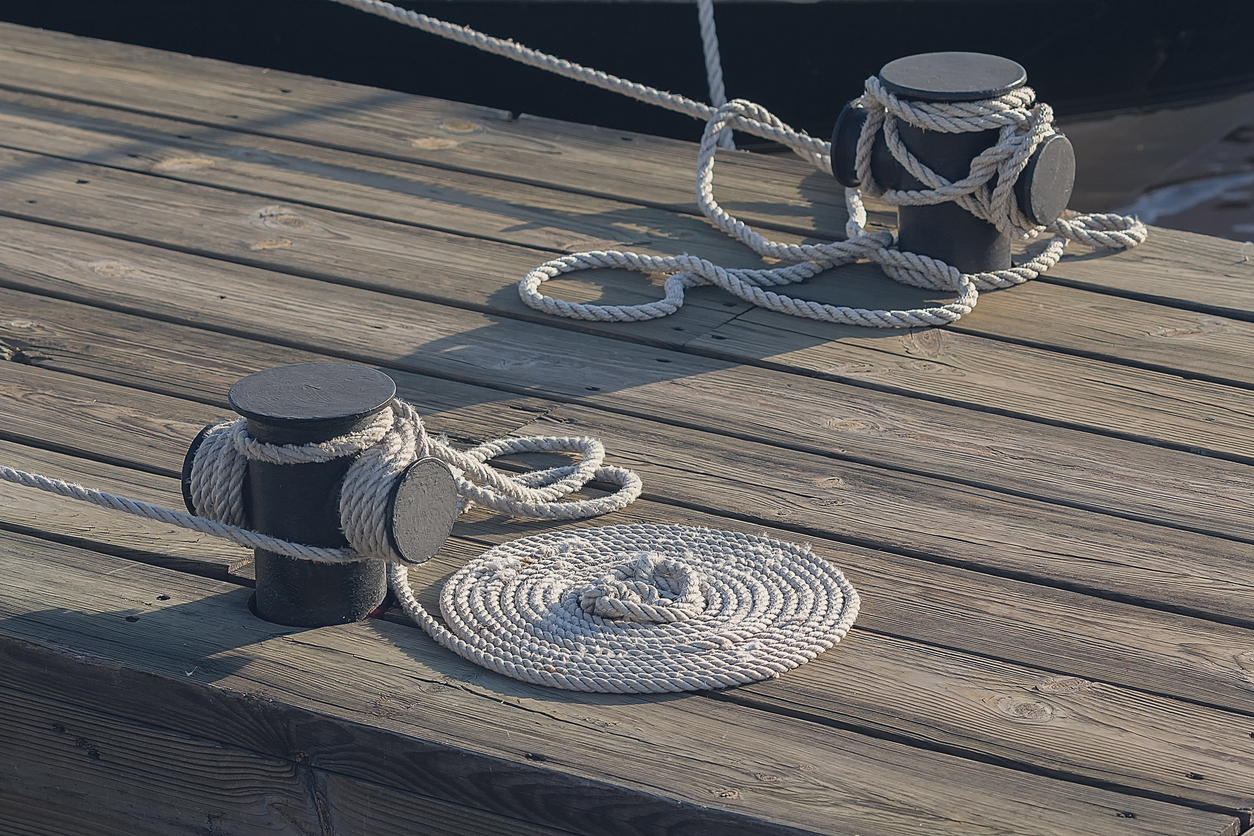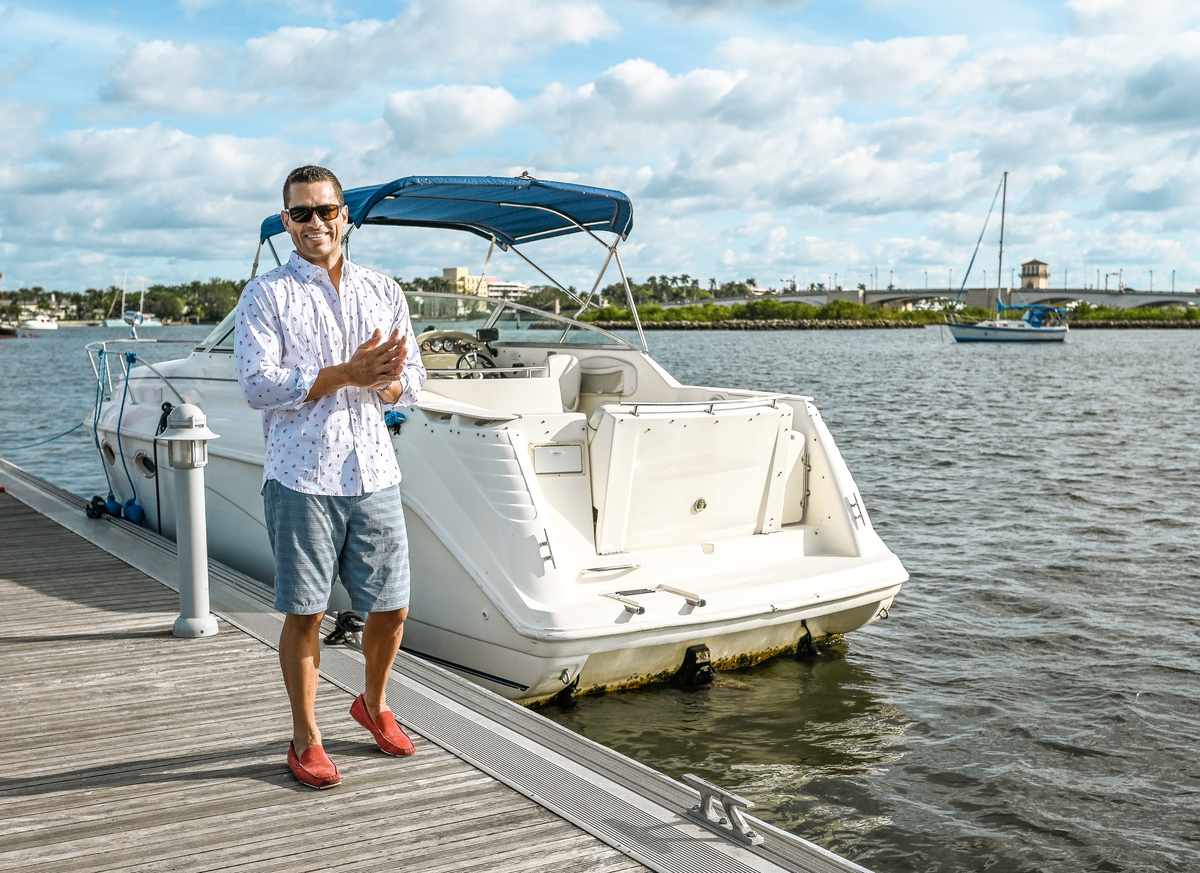Owning a boat can bring fun and excitement for the whole family, but it also comes with responsibilities. For new boat owners, understanding the different boat moorage options helps keep a vessel secure while in the water. The main ways to park a boat include anchoring, docking at a slip, or mooring. Each has its own advantages and drawbacks.
Mooring is a popular choice that allows boat owners to park their vessel temporarily or long-term without removing it from the water or paying slip fees. Familiarity with the process and the right equipment can make mooring easier and safer. This guide covers how to moor a boat, the equipment required, and a step-by-step approach to proper boat moorage in Annapolis, MD.
What Is Boat Moorage?
Mooring is an option for parking your boat in the water that involves securing it to a permanent anchor point, such as a mooring dock, buoy, pier, wharf, quay, or jetty, to prevent it from drifting when parked in open water.
Depending on the type of mooring, you may need a dinghy or tender to reach shore, as is the case with a mooring buoy. Mooring a boat may be necessary for various reasons, such as parking your boat to fill it up, taking a break to swim, preparing to park your boat overnight, or storing it in the water when not in use. Exploring different boat moorage options helps you choose the method that works best for your needs.

What Equipment Do I Need to Moor Properly?
Having the right equipment when mooring your boat can make all the difference between keeping it securely in place and risking damage or drifting away, which can happen if a boat is not properly secured. Since a boat represents a significant financial investment, the last thing you want is for it to become damaged, float away, or cause damage to another boat or structure. That’s why it’s wise to purchase the proper equipment before attempting to moor your boat.
The equipment typically needed includes:
- An anchor with an anchor line attached
- A stern line
- Bow line
- Spare line
- Spring line
- A couple of fenders
- A boat hook
Of course, the exact equipment you will need depends on the type of mooring you’re securing your boat to. For instance, when mooring to a dock or pre-existing anchor buoy, you likely won’t need your own anchor and anchor line.
How to Moor Your Vessel: A Step-By-Step Guide
Mooring a boat can seem daunting at first, especially if you’ve never done it before. While the process can be tricky, understanding the right techniques makes it easier to complete successfully. Some trial and error may be needed to become comfortable, particularly when mooring at a busy dock or in areas with many boats nearby. To help you gain confidence, here’s a step-by-step guide for mooring safely and efficiently.
Know Where You’re Allowed to Moor
Knowing where you’re allowed to moor your boat before you arrive at a marina reduces stress and prevents mistakes, such as parking in an unauthorized spot. Each marina has its own policies: some operate on a first-come, first-served basis, while others require a reservation and a designated dock space or buoy. Being aware of these rules in advance can save time and frustration, especially during busy periods or peak boating season.
Before arriving, check available boat mooring options to understand where you can park your vessel and what fees may apply. Some marinas may have restrictions on boat size or types of mooring, and certain spots may be reserved for long-term moorage.

Keep the Weather in Mind
Once you know where you’re allowed to moor your boat, you’ll be ready to start the mooring process. As you approach your mooring spot, make sure that you pay attention to the weather, as wind speeds and currents can pose challenges when mooring your boat. Moving toward a mooring buoy or dock from upwind or up-current allows safer maneuvering, so you can stay in control while reducing the risk of being pushed into the dock, buoy, or another boat.
Reduce Speed and Bring Your Boat to a Halt
As you get close to the mooring dock or buoy, gradually slow your boat and use reverse to stop at a safe distance. Taking your time helps prevent collisions with the dock or buoy and keeps the boat steady against wind and current.

Prepare Your Equipment (and Secure Your Boat)
Begin preparing the equipment, including a boat hook if you’re mooring to a buoy, as you reach the mooring. A boat hook makes it easier to grab the buoy and secure your boat. You can also use a line to lasso the buoy and pull your boat towards it. Whether you’re mooring to a buoy or a dock, you’ll also need to prepare a line to secure your boat. Make sure that you also put fenders next to the mooring on the side of your boat so that your boat isn’t damaged by the tide pushing it into the mooring. Finally, you will be ready to tie your boat to the mooring, securing your boat in place.
After securing your boat to the mooring, go through a quick checklist to make sure everything is in order:
- Ensure lines are clear and properly fastened
- Close hull valves
- Turn on the bilge pump
- Switch off non-essential electronics, such as lights and radios, to save battery power
- Store life jackets
- Latch cabin doors
- Take your boat keys and set the security alarm
Completing these steps keeps your boat secure while you’re away and lowers the risk of problems.
Looking for Boat Moorage Options in Annapolis, MD? Contact Trident Marine Group Today!
If you’re looking to moor your boat in Annapolis, MD, whether overnight, for a short stay, or long-term storage, you’ll find high-quality, convenient, and affordable moorage spaces at The Marinas by Trident Marine Group. Not only do we offer boaters a wide range of convenient boat mooring, docking, and storage facilities, but we also provide high-end amenities such as swimming pools, clubhouses, concierge services, an on-call mechanic, and on-site bars and restaurants. Feel free to contact us today to learn more about our rates and storage options, as well as the benefits of entrusting us with your boat’s safety and security.

